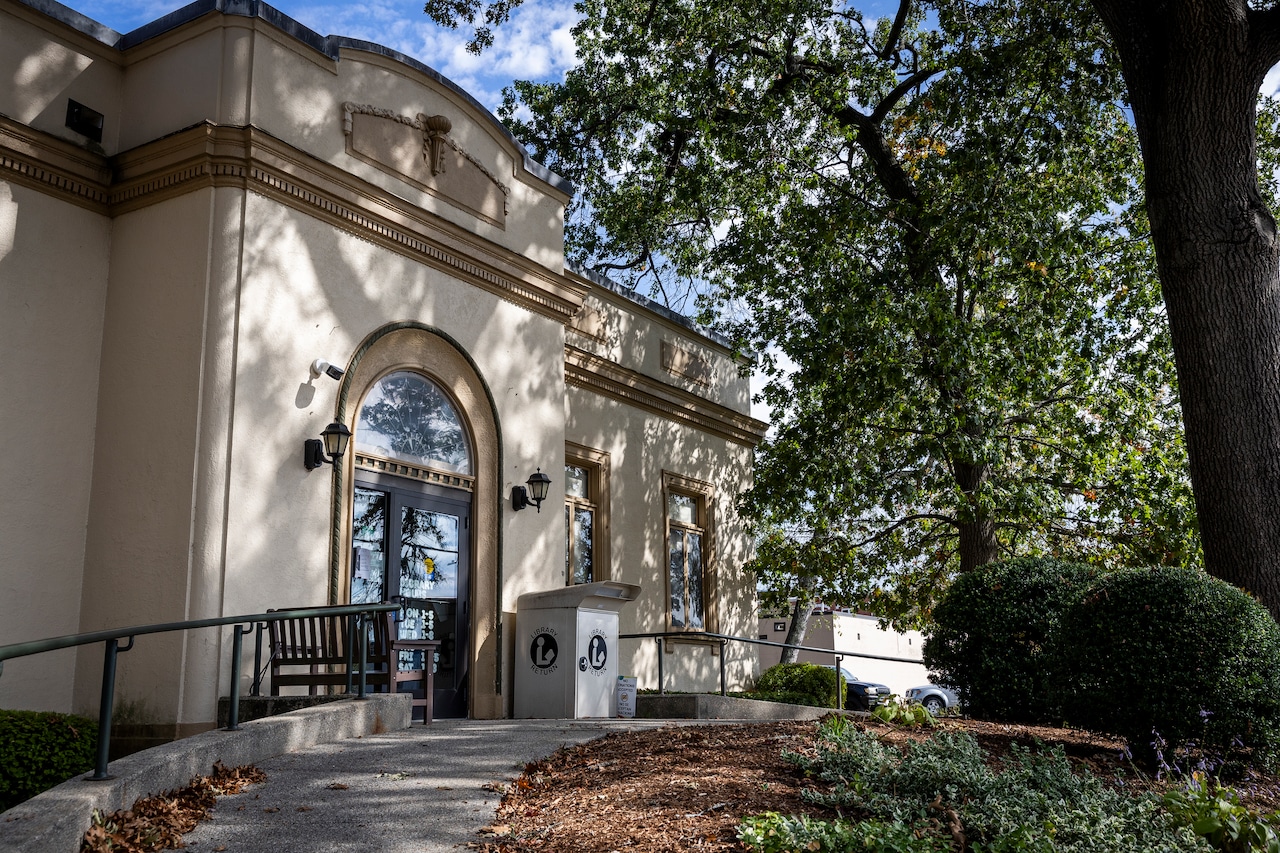
SPRINGFIELD — One of the city’s oldest and smallest neighborhood branch library is almost easy to miss. Yet, inside the East Springfield Library’s outdated and cramped building at 21 Osborne Terrace, it’s impossible to ignore how beloved the building is to its patrons.
On a recent sunny autumn day, the branch, built in 1932, was abuzz with activity. In one corner, a dozen folks were learning about the healing nature of poetry under the guidance of writer Rhonda Owens Gilbert.
In the children’s section, Catie and Charlie Galbacher, who never miss spending part of their Saturday afternoon at the East Springfield Library, were helping their 8-year-old son Colton make an autumn wreath from a paper plate and cut-out leaves.
Other regular patrons were reading the newspaper and tapping notes on the library’s computer station.
“It’s a place where kids — and even adults — feel comfortable kicking off their shoes,” said Angela Vickers, principal clerk at the East Springfield branch.
After decades of making do with the 300,000-square feet space, loyal patrons of the branch are finally getting what they deserve — a brand new $9.5 million library to be built on the same spot where the original now stands.
In January, the Massachusetts Board of Library Commissioners awarded the city a $100,000 planning and design grant for the new building. The first planning phase is expected to be completed next year, followed by construction of the new library, scheduled to open in the spring or summer of 2027.
Library Director Molly Fogarty and library staff are proud of the successes the system has achieved and grateful for the financial support of Mayor Dominic Sarno, who has included increased budget appropriations for the library for the last nine years.
Goals achieved since the last strategic plan, completed in 2020, include: a successful $2 million capital campaign to build a new East Forest Park branch with the help of 500 donors; the issuance of 10,000 new library cards by eliminating late fees; a 2025 summer reading program that tracked 1 million hours of reading by city youth; and the lending of 200 hot spots to library cardholders with limited internet access.
The last five-year plan also helped the library staff hone its expertise in serving the public during the midst of the COVID pandemic, Fogarty said.
“We were closed for 17 months,” she said. “We had to figure out how to serve the public when we couldn’t leave the building.”
The staff became experts at pivoting, Fogarty said. “We put tables outside and scheduled times at 15-minute intervals for patrons to take out books.”
Public input sought
With a new five-year plan, now underway, the library — in partnership with national consulting firm ReThinking Libraries — is seeking input from citizens about what they want to see in their local branch libraries in the future.
To reach as many city residents as possible, the library has conducted a brief online 10-minute survey, available in English Spanish, Haitian Creole and Swahili. The questionnaire is also available in paper format at all library branches.
“As we look ahead to 2030, who knows what the library will be offering, given technology advances including AI?” Library Assistant Director Jean Canosa Albano said. “But one thing our library leadership believes is that the institution will continue to be hub for community engagement, learning and truth.”
In addition to the survey, the library has held a series of listening sessions with city residents as it works to redefine the library’s priorities, mission, vision and values.
A recent session held at the Central Library on State Street, led by ReThinking Libraries consultant Janet Nelson, had participants bouncing off ideas on how to improve library services.
“When I moved to Springfield, the library was the place for information,” said listening session participant James Lightfoot III, who works with youth at an Urban League program. “City residents don’t realize how much the library offers,” he said.
Lightfoot and other participants said the library should increase its outreach efforts so that people know they can vote at the library, borrow a sewing machine, a musical instrument, or attend a learn-to-knit club.
One idea that kept popping up was the need to renew efforts to engage youths, especially teens, who might view kids’ programming as “too babyish” for them.
Rosemary Montero Hernandez, executive director of Clarendon Early Education Services, said teens need a welcoming and safe place to hang out, noting that the library can provide that.
“The City of Springfield has so many layers to it,” she said. “The library brings it all together, connecting people throughout the community.”
Educator, Springfield Symphony Orchestra musician and lifelong city library patron Joel Meginsky noted that each branch in the library system has its own character. “It’s one of the coolest things about living in Springfield,” he said. “I visit them all.”
Meginsky also sang the praises of the central library’s music room — recalling the 1950s and ’60s when patrons could listen to an album at the library before investing in a record — or borrow vinyl records and CDs to bring home
More music programs involving teens could be a draw, the group agreed.
All of the participants underscored the library system’s value as a “community center.”
“How about having an event where people can hand out business cards,” participant Jeremy Whalen said. “It could be an economic driver.”
Springfield is home to eight library branches in a 32-square-mile city with a population of 150,000.
“It’s something to be very proud of,” Fogarty said.